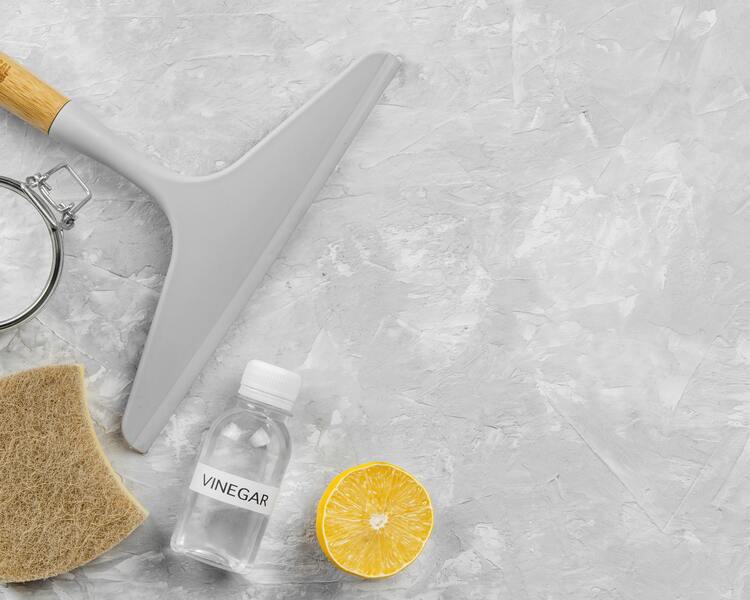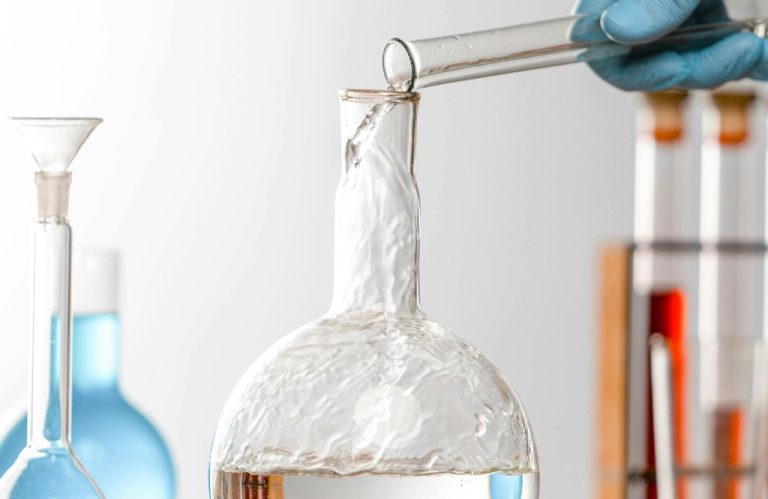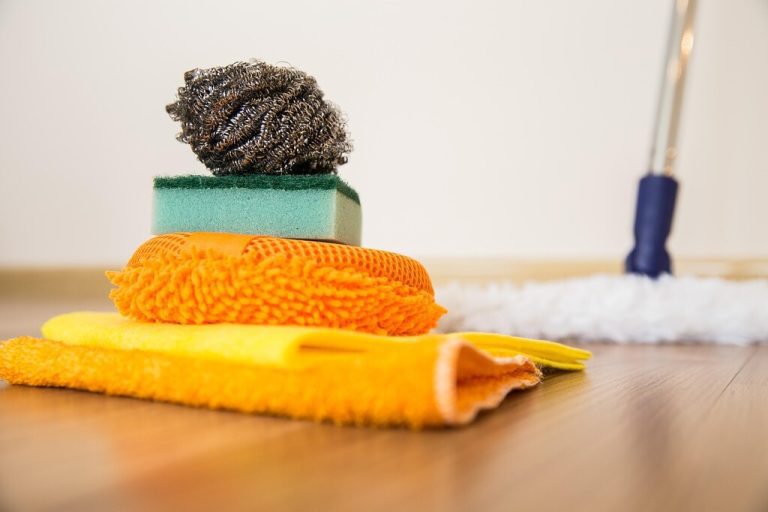Are you looking for a natural and effective cleaning solution that is safe for your home and the environment? If yes, then distilled malt vinegar for cleaning could be an alternative that you should consider.
However, some of you might still be unfamiliar with distilled malt vinegar for cleaning. Don’t worry, today we’re going to cover everything you need to know about distilled malt vinegar for cleaning.
Learn about some alternative uses of distilled malt vinegar for cleaning that might surprise you!
What is Distilled Malt Vinegar?
Distilled malt vinegar is a type of vinegar that is derived from malted barley, featuring a distinctive aroma and a higher level of acidity due to its acetic acid content, making it a versatile option for various household cleaning tasks.
During the production of distilled malt vinegar, the malted barley undergoes a fermentation process where sugars are converted into alcohol. This alcohol is then subjected to a second fermentation with the presence of acetic acid bacteria, resulting in the formation of vinegar.
Known for its clear colour and sharp flavour, distilled malt vinegar is often used in pickling, salad dressings, and marinades to add a tangy kick to dishes. Plus its culinary uses, distilled malt vinegar is valued for its antiseptic properties, making it an effective natural cleaning agent for surfaces like windows, and countertops, and even removing rust stains.
How is Distilled Malt Vinegar Made?
Distilled malt vinegar is made through the fermentation of malted barley, which is then distilled to increase its acetic acid concentration, resulting in a potent cleaning agent.
During the production process, the malted barley undergoes fermentation, where sugars are converted into alcohol by yeast. This fermented liquid is then distilled to separate the alcohol and concentrate the acetic acid, giving the vinegar its characteristic sharp and tangy flavour. The distillation process helps increase the vinegar’s acidity, making it a powerful cleaning solution that can effectively cut through grease and grime. Once distilled, the vinegar is left to mature and develop its flavour profile before being bottled for consumer use.
Is Distilled Malt Vinegar Safe for Cleaning?
Yes, distilled malt vinegar is safe for cleaning a variety of surfaces and is considered an eco-friendly alternative to many commercial cleaning products due to its natural composition and minimal chemical additives.
One of the key advantages of using distilled malt vinegar for cleaning is its non-toxic nature, making it safe to use around children and pets. Its gentle acidic properties make it effective in removing tough stains and dirt from surfaces such as countertops, glass, and bathroom fixtures without the need for harsh chemicals.
Distilled malt vinegar is versatile and can be used to clean a wide range of surfaces, from kitchen appliances to floors, making it a convenient all-purpose cleaner. It is also a cost-effective option compared to traditional cleaning agents, as it is readily available and inexpensive. The natural disinfectant properties of vinegar further enhance its cleaning capabilities, providing a hygienic cleaning solution for your home.
Why Use Distilled Malt Vinegar for Cleaning?
Using distilled malt vinegar for cleaning offers numerous benefits, including its natural and non-toxic properties, effectiveness against bacteria and germs, affordability, and wide accessibility, making it an excellent choice for various household cleaning tasks.
a. Natural and Non-Toxic
One of the main reasons to use distilled malt vinegar as a cleaning agent is its natural and non-toxic composition, which makes it safe for use around children and pets.
Unlike chemical-based cleaning products that often contain harsh and potentially harmful ingredients, distilled malt vinegar provides a gentle yet effective alternative for maintaining a clean and healthy home environment.
Because of its natural acidity, distilled malt vinegar can effectively break down grease, grime, and mineral deposits without leaving behind any toxic residue or strong chemical odour.
b. Effective Against Bacteria and Germs
Distilled malt vinegar is highly effective against bacteria and germs due to its acetic acid content, which acts as a natural disinfectant.
This natural disinfectant is particularly potent when it comes to cleaning kitchen surfaces, cutting boards, and even bathrooms. When used for cleaning, the acetic acid in distilled malt vinegar penetrates the cell membranes of bacteria, disrupting their functions and ultimately leading to their destruction.
Distilled malt vinegar is an excellent choice for cleaning tasks where you want to avoid harsh chemicals, yet still achieve a thorough and effective clean. Whether it’s sanitising countertops or freshening up laundry, this versatile household staple can tackle a variety of cleaning chores.
c. Affordable and Easily Accessible
Distilled malt vinegar is both affordable and easily accessible, making it a cost-effective alternative to many commercial cleaning products commonly used in households.
The economic benefits of using distilled malt vinegar for cleaning extend beyond just its low cost and easy availability. When compared to other household cleaning products, such as specialised cleaners for glass, worktops, or floors, distilled malt vinegar proves to be a much more budget-friendly option. In most grocery stores, a bottle of distilled malt vinegar costs significantly less than purchasing multiple cleaning products for different surfaces. This makes it not only a practical choice for everyday cleaning but also a much more affordable solution for those looking to save money while maintaining a clean home.
What Surfaces Can Be Cleaned with Distilled Malt Vinegar?
Distilled malt vinegar can be used to clean a wide variety of household surfaces and materials, from worktops and floors to glass and kitchen appliances, thanks to its versatility and low staining potential.
a. Countertops and Surfaces
Distilled malt vinegar is an excellent cleaning agent for worktops and various surfaces, effectively removing stains and ensuring a clean and germ-free area.
When using distilled malt vinegar for cleaning, it is important to dilute it with water to avoid any potential damage to the surfaces. A common ratio for dilution is 1 part vinegar to 1 part water, but for particularly tough stains, a stronger solution of 2 parts vinegar to 1 part water may be necessary. To tackle stubborn stains, you can create a paste by mixing vinegar with bicarbonate of soda and scrubbing the affected area gently.
b. Floors and Carpets
Cleaning floors and carpets with distilled malt vinegar can be an integral part of your cleaning routine, offering a natural way to eliminate dirt and odours.
Before using distilled malt vinegar for cleaning, it’s important to dilute it with water to prevent any potential damage to the flooring or carpets. For hardwood or laminate flooring, mix equal parts vinegar and water in a spray bottle. For carpets, combine vinegar with water in a bucket. Apply the solution sparingly to avoid oversaturation. Use a mop or cloth to gently scrub the surface, then dry thoroughly.
For tough stains or odours, you can add a few drops of essential oils to the vinegar solution. Always test a small inconspicuous area first to ensure compatibility with the flooring or carpet material. This eco-friendly cleaning method not only sanitises but also leaves a refreshing scent behind.
c. Glass and Mirrors
Distilled malt vinegar is ideal for cleaning glass and mirrors, providing a streak-free shine and removing any smudges or fingerprints.
When using distilled malt vinegar for cleaning purposes, it is important to dilute it with water to avoid any potential damage. A common dilution ratio is one part vinegar to one part water, although this can be adjusted based on the level of dirt or stains on the glass surface.
To apply the solution, transfer it to a spray bottle for easy distribution. Next, spray the mixture on the glass or mirror and use a lint-free cloth or newspaper to wipe it off. Ensure you reach all corners and edges to achieve a spotless finish.
d. Kitchen Appliances
Using distilled malt vinegar to clean kitchen appliances can help remove stains, grease, and odours, maintaining their cleanliness and functionality.
For example, to clean a microwave, mix equal parts of distilled malt vinegar and water in a microwave-safe bowl. Heat the mixture for a few minutes until steam forms, then wipe down the interior with a damp cloth. To clean a coffee maker, run a cycle with a mixture of water and distilled malt vinegar to remove mineral buildup. For stainless steel appliances, spray the vinegar directly on the surface and wipe with a soft cloth to restore shine and remove fingerprints.
How to Use Distilled Malt Vinegar for Cleaning?
To effectively use distilled malt vinegar for cleaning, it is important to understand the various techniques and methods that can be employed for different cleaning tasks, ensuring optimal results and safety.
a. Diluting with Water
Diluting distilled malt vinegar with water is a common practice, creating a gentle yet effective cleaning solution suitable for various household surfaces.
This simple method not only helps in minimising the acidity of the vinegar, making it safe to use on a wider range of surfaces but also ensures that you can stretch a single bottle of vinegar further, making it more cost-effective as well.
When diluting vinegar for general cleaning purposes, a popular ratio is mixing one part vinegar to one part water, which strikes a good balance between effectiveness and safety for most surfaces.
For tougher jobs like cleaning stubborn stains or disinfecting surfaces, you can opt for a stronger solution by using two parts vinegar to one part water or even full-strength vinegar.
Knowing when to use diluted vinegar versus full-strength vinegar is key. Diluted vinegar is ideal for everyday cleaning tasks like wiping down countertops, mirrors, and windows, while full-strength vinegar is better for tackling tougher grime and grease buildup.
b. Using as a Spray
Using distilled malt vinegar as a spray makes it easy to apply on surfaces, allowing for convenient and thorough cleaning of areas that are difficult to reach.
When preparing a vinegar spray, you will need a few basic materials readily available in your kitchen. These include distilled malt vinegar, water, and a clean spray bottle for application. To create the solution, simply mix equal parts vinegar and water in the spray bottle.
The beauty of this vinegar spray is its versatility. It can be used on various surfaces such as glass, countertops, and even stainless steel appliances. Simply spray the solution onto the surface, let it sit for a few minutes, and then wipe it clean with a cloth or sponge.
c. Soaking and Scrubbing
For tough stains and deep cleaning, soaking and scrubbing with distilled malt vinegar can help break down grime and remove stubborn residues.
When soaking items in vinegar, make sure they are fully submerged for an effective cleaning process. Let them soak for at least 30 minutes to an hour, or even overnight for more stubborn stains. For scrubbing, use a soft-bristled brush or sponge to gently work on the surface, avoiding harsh abrasives that may damage the material.
Remember to wear gloves and work in a well-ventilated area when handling vinegar, as its strong acidic nature can irritate the skin and eyes. Test a small inconspicuous area before soaking or scrubbing to ensure compatibility with the surface and to prevent any unwanted reactions.
Are There Any Alternative Uses for Distilled Malt Vinegar?
Beyond its primary use as a cleaning agent, distilled malt vinegar can also be employed for a variety of alternative purposes around the home, providing additional cleaning tips and solutions.
a. Removing Stains and Odours
Distilled malt vinegar is highly effective at removing stains and neutralising odours on various household items, making it a versatile addition to any cleaning arsenal.
One common application of vinegar is to tackle stubborn carpet stains. By mixing equal parts of white vinegar and water in a spray bottle, you can effectively remove spots left by spills or dirt. Simply spray the solution onto the stain, let it sit for a few minutes, then blot it up with a clean cloth. The acidity of the vinegar helps break down the stain without leaving a lingering odour.
Vinegar can be used to freshen up musty-smelling towels. Simply add half a cup of vinegar to the rinse cycle when washing towels to eliminate any lingering odours. This simple trick can leave your towels smelling clean and fresh.
For an eco-friendly and effective cleaner for glass surfaces, mix equal parts of water and vinegar in a spray bottle. This solution works wonders on windows, mirrors, and glass tables, leaving them streak-free and sparkling.
b. Unclogging Drains
Unclogging drains with distilled malt vinegar is a simple and effective household cleaning solution, helping to dissolve clogs and clear blockages without harsh chemicals.
To utilise this natural method, start by pouring a pot of boiling water down the drain to loosen any debris. Next, pour 1 cup of distilled malt vinegar followed by 1/2 cup of bicarbonate of soda down the drain. Allow the mixture to fizz and work its way through the pipes for about 10 minutes. Then, flush the drain with another pot of boiling water. For tougher clogs, you can let the vinegar and bicarbonate of soda mixture sit overnight before flushing the drain. This process is not only cost-effective but also environmentally friendly.
c. Polishing Silverware
Distilled malt vinegar can be used to polish cutlery, restoring its shine and removing tarnish through a simple cleaning technique.
To start the process, gather all the tarnished cutlery, a bottle of distilled malt vinegar, a soft cloth or sponge, and some bicarbonate of soda.
Begin by rinsing the cutlery in warm, soapy water to remove any dirt or debris. Next, pour a small amount of vinegar onto a cloth or sponge and gently rub it onto the tarnished areas. For stubborn tarnish, create a paste with vinegar and bicarbonate of soda, apply it to the cutlery, and let it sit for a few minutes before buffing it off with a clean cloth.
Remember to rinse and dry the cutlery thoroughly after polishing to reveal its lustrous shine.
That’s a complete explanation of everything you need to know about distilled malt vinegar for cleaning. Are you interested in using this product? While it’s a great natural cleaner, achieving a truly spotless home requires professional expertise.
At TEKA Cleaning, we offer residential cleaning services that go beyond what DIY solutions can achieve. Our skilled team uses the best tools and techniques to ensure your home is immaculate, safe, and hygienic.
Don’t wait to experience the highest standard of cleaning. Call TEKA Cleaning now on 01223 751 544 to book your residential cleaning appointment. Act now and enjoy a cleaner, healthier living environment.
Read also:











